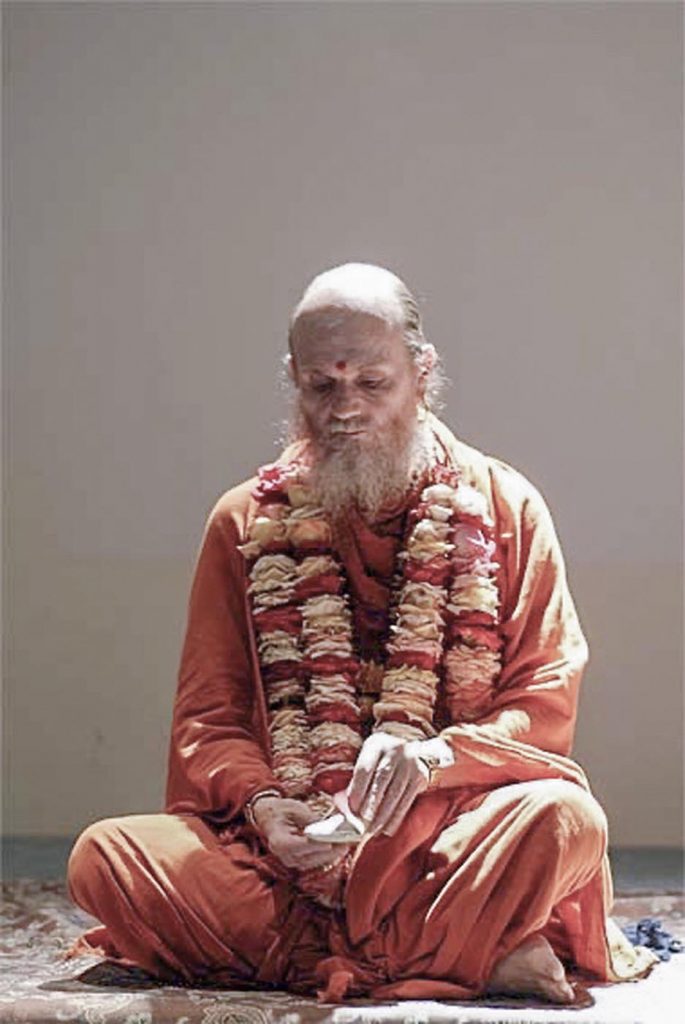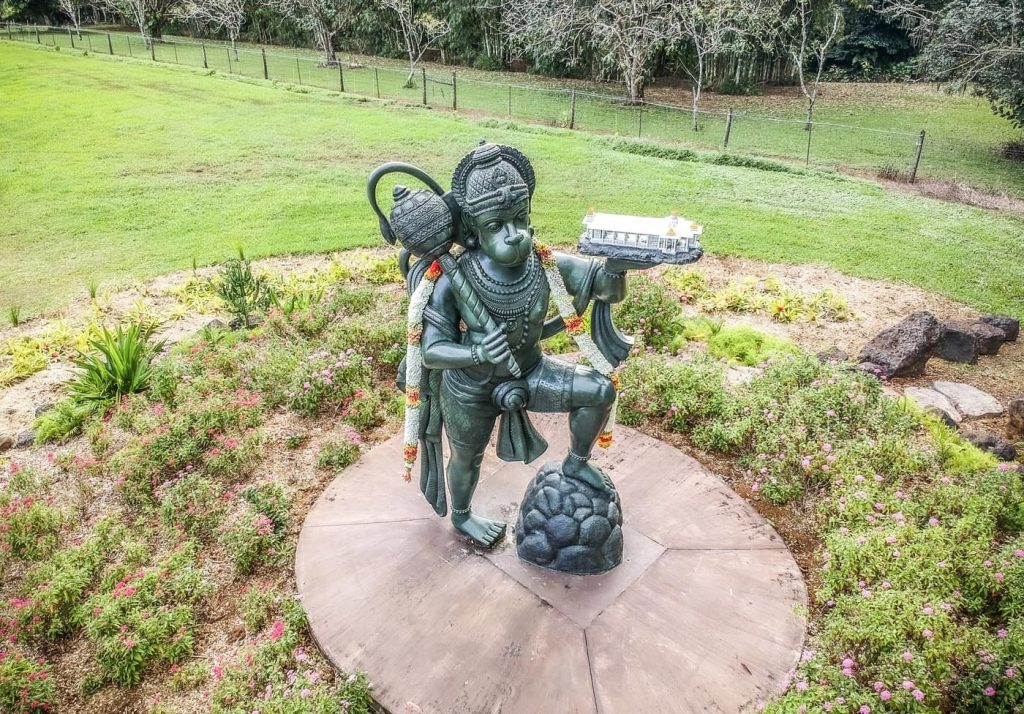Practical and Spiritual Responses to Hardships and Loss—from the Heart, the Hand, the Head and the Soul
By Satguru Bodhinatha Veylanswami

The entire world entered a challenging new era in December, 2019, when the first human cases of Covid-19 were identified in Wuhan, China. In the two and a half years since then, the lives of virtually every human being were touched by lockdowns, economic hardships, health issues and loss of loved ones. With the pandemic still with us, global citizens now face another avalanche of difficulties provoked by Russia’s war on Ukraine. The greatest military conflict in Europe since WWII, it has further disrupted the world’s supply chains and contributed to soaring prices, as well as severe shortages of food and fuel in many countries. These hardships have become so dire that people in poor nations are demonstrating in the streets, hoping a new government will be voted in and improve conditions for the populace. Financial markets are in turmoil, recovery of the global economy is in doubt and Europe is experiencing the most severe humanitarian crisis it has seen in decades.
From the Heart
The first and foremost response to major challenges such as the pandemic or the war in Ukraine is to arouse our compassion and offer supportive thoughts to those who are experiencing hardship and loss of loved ones. This first response is one of compassion and is from the heart.
From the Hands
Next is to provide practical help. In an early response to the pandemic, Hindu groups around the world stepped forward to do just that. For example, as reported in our April 2021 issue, Sewa International first focused on helping the most vulnerable, such as by providing N-95 masks to caregivers and frontline workers. Next came the Sewa Sankalp initiative which combined dharmic resources to ward off the Covid-19 threat and build cooperation and collaboration. It was an ambitious effort to bring spiritual groups together in service to the community. Volunteers sent the Sankalp Patra (letter of intent) to 1,000 organizations, and 500 of them signed the pledge. Several institutions gave money, material and volunteers to the Sewa relief work in key cities. By joining hands with Sewa or working on their own, dharmic institutions helped soften the blow of the pandemic, providing meals, food packets, milk and other essentials to the needy. Thus, our second response is of a practical, helpful nature and is with our hands.
From the Head
Our first and second responses are directed toward the emotional and physical needs of the immediate situation. Once those have been addressed, we can step back and take more of an overview, seeking ways we can learn from a tragedy to face future calamities with better preparation. Should more resources be stored for emergencies, such as food and fuel? Are better plans needed to help individuals resume supporting themselves? This and more requires good thought. The wisdom of this suggestion is more apparent at this time in history than it was before Covid-19, its lockdowns and now Russia’s brutal attack of Ukraine and the global chaos that conflict is causing.
This third response focuses on planning and is from the head. At the national and international level, countries and medical agencies instituted safeguards to prevent the spread of the virus, and bolstered systems for facing pandemics of the future. In response to the war in Ukraine that threatens the entire continent, leaders of nations are joining together to stop the aggression and guard against future incursions. As Gurudeva, Sivaya Subramuniyaswami, wrote: “It is when the Devaloka [higher minded] people are in charge that peace will truly come; it can come in no other way. So, if the Devaloka people really desire to have peace on Earth, they should not be shy but take charge. …They have to all get to know each other and then join hands in love and trust and work together.”
From the Soul
Stepping back even further, we come to the philosophical level of why such devastating events happen. Some people’s faith in God is shaken, as they are not able to comprehend how a benevolent God could let such catastrophes happen. Others are overwhelmed and turn negative toward life. From the Hindu viewpoint, a pandemic is part of nature and is not an act of God. Earthquakes, tsunamis, hurricanes, disease, fires, droughts and floods are all normal expressions of nature. Man, too, is part of nature, with ever-increasing power to create disasters rivaling nature’s greatest fury.
Such philosophical reflection—our fourth level of response—comes from our soul. The Hindu beliefs in the Divinity of all things, the soul being eternal, inner planes and reincarnation are a great source of solace during times of suffering, tragedy and loss.
Gurudeva wrote in Dancing with Siva: “The nature of the world is duality. It contains each thing and its opposite: joy and sorrow, goodness and evil, love and hate. Through experience of these, we learn and evolve, finally seeking Truth beyond all opposites. There is a divine purpose even in the existence of suffering in the world. Suffering cannot be totally avoided. It is a natural part of human life and the impetus for much spiritual growth for the soul. Knowing this, the wise accept suffering from any source, be it hurricanes, earthquakes, floods, famine, wars, disease or inexplicable tragedies. Just as the intense fire of the furnace purifies gold, so does suffering purify the soul to resplendence. So also does suffering offer us the important realization that true happiness and freedom cannot be found in the world, for earthly joy is inextricably bound to sorrow, and worldly freedom to bondage. Having learned this, devotees seek a satguru who teaches them to understand suffering, and brings them into the intentional hardships of sâdhana and tapas leading to liberation from the cycles of experience in the realm of duality.”
On the personal level, living through a catastrophe can be a catalyst to reflect profoundly on one’s life and look for ways to add deeper meaning to it. Life-changing moments are rare and are often provoked by something that drastically upsets our day-to-day existence.
Many individuals will have been considering making changes in their life but have never gotten around to doing so. Now is an excellent time to revisit such plans and set them into motion. Plans could relate to the family’s spending more quality time together, with more frequent verbalizing of love for others. For those who are focused on community, now is a good time to share and implement those plans for new activities that would uplift and advance those in nearby neighborhoods. For those with strong spiritual interests, now may be the time to learn that new meditation practice, improve one’s Sanskrit and puja performance or go on that long-desired pilgrimage to ancient tirthas in India. These are just some of the many ways we can take the energy generated by global challenges and use it to improve our life, our families lives and the lives of the surrounding community.
Most disasters are not so global, but still require the right response. Here at our Hawaii monastery we experienced an unfortunate event a few years back. A 13.5-foot tall black granite Hanuman that had taken four Indian artisans seven years to create was lying down awaiting installation when, one morning, a monk discovered that both His legs had broken at the calf, making the murti unusable. All those years of artistic sculpting lost. All that considerable expense gone.
Clearly, it was a disaster. But the monks could never forget Gurudeva’s teaching that even a disaster faced with high consciousness can be turned into a blessing and a boon. The monks meditated on what Gurudeva would do, and arranged for the broken murti to be molded and then cast in bronze by a team in Colorado. The result was even better than the original stone, since the sculptor could add refinements in wax not possible in stone. After another team of more than twenty bronze masters worked for over a year, a masterpiece emerged and was shipped to Hawaii to be installed near our sacred Rudraksha Forest. Amazingly, today the monks are actually happy that the original stone murti broke, for without that event the far more amazing bronze would not exist. It’s a perfect example of Gurudeva’s teaching that it is not what happens to us in life that matters. It is how we respond.
